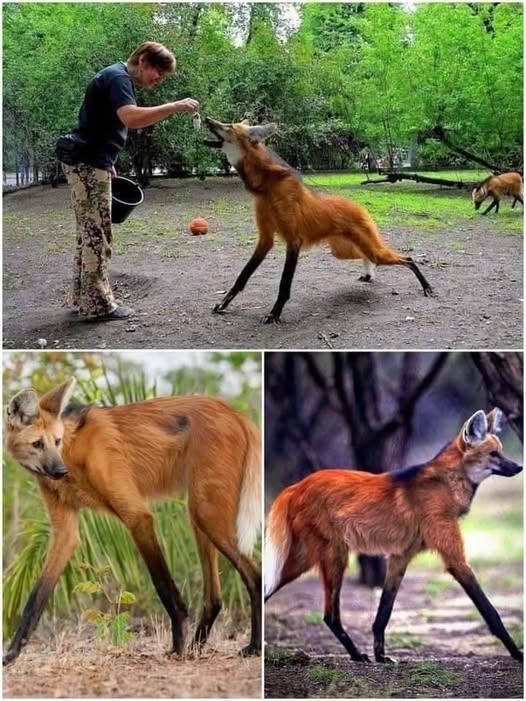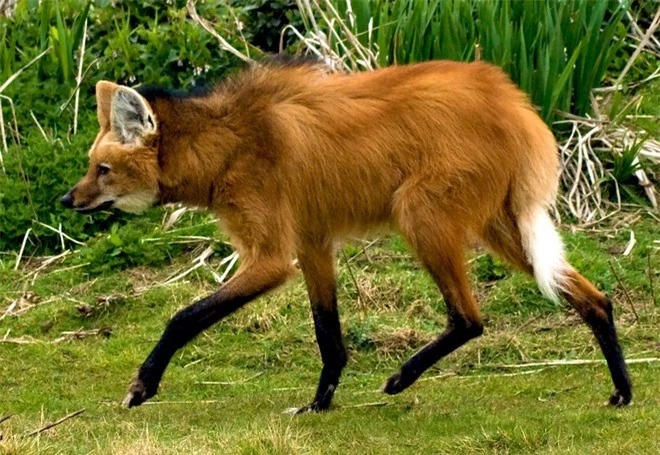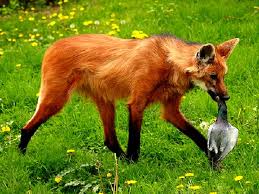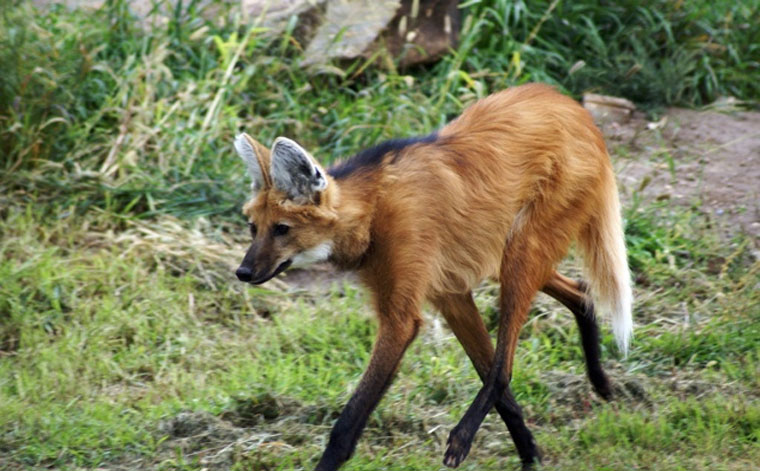The Maned Wolf: South America’s Enigmatic “Fox on Stilts”

The Maned Wolf: South America’s Enigmatic “Fox on Stilts”
RELEATED VIDEOS :
In the open grasslands of South America, a mysterious figure roams—tall, slender, and unlike any other. Known as the maned wolf, this remarkable animal is often nicknamed the “fox on stilts.” Yet, despite its name, it is neither a wolf nor a fox, but a species entirely its own.
Found across Brazil, Bolivia, Paraguay, and Argentina, the maned wolf is instantly recognizable by its long, stilt-like legs, an evolutionary adaptation that allows it to peer above tall grasses and move swiftly through open landscapes. Its reddish-golden coat, contrasted by a dark mane that bristles when the animal feels threatened, makes it one of the most striking canids in the world.
The maned wolf is an omnivore with a varied diet. It hunts small mammals, birds, and reptiles, but is equally fond of fruit. One of its favorite treats is the so-called “wolf apple,” a tomato-like fruit that plays an important role in its diet and in dispersing seeds across the ecosystem.
Beyond its unusual appearance, the maned wolf is shrouded in mystique. Its distinctive “bark-howl,” a deep and haunting call that resonates across the savanna, has fueled myths and folklore throughout South America. To many, the animal carries a spiritual aura, symbolizing the wild, untamed essence of the continent’s landscapes.
Unfortunately, the maned wolf faces ongoing threats from habitat loss, road accidents, and hunting. Conservation efforts are underway to protect both the species and the fragile ecosystems it inhabits. For scientists and nature lovers alike, the maned wolf stands as a reminder of the delicate balance between human activity and the survival of South America’s most unique wildlife.
Graceful, solitary, and deeply symbolic, the maned wolf remains one of nature’s most captivating enigmas—a living icon of the grasslands and a true emblem of South America’s biodiversity.











